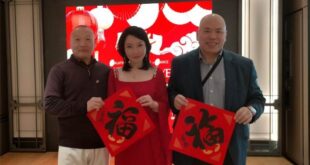尽管芭蕾舞是从巴黎传到俄罗斯,经过法国大师 Marius Petipa 在当地(彼得堡,从29岁至人生末步)的努力,俄罗斯芭蕾成为【世界之最】。外行人还以为是俄罗斯“发明”的芭蕾舞 。。。更有做“美国梦”的中国土豪,认为美国的芭蕾舞是“世界第一”,那是“井底蛙”之谈,天是圆的,对吧 🙂
很多世界著名的芭蕾舞剧(天鹅湖,睡美人,堂吉诃德),都有 Petipa 版,而且是【经典】,对舞蹈演员的要求很高,很多芭蕾舞团只能演出“其他”版,它们“缺乏人手” 🙁
这里通过【堂吉诃德】,介绍芭蕾中很重要的成分:(大)双人舞。堂吉诃德的【大双人舞】是最著名的了
俄罗斯有两个芭蕾舞团队被视为【世界顶峰】,根据不同品味,有的喜欢【莫斯科大剧院】(“国家队”),更多人(特别是法国人)喜好【彼得堡马林斯基】(“皇家队”),被认为更加【优雅】(动作偏慢)。花样滑冰有同样“现象”
顺带一句,前三个芭蕾舞的音乐,是柴可夫斯基作曲 🙂
上面视频是 马林斯基 Olesya Novikova 和 Leonid Sarafanov 在2006年的演出
下面的视频是苏联芭蕾明星 Екатерина Максимова (Ekaterina Maximova) 在1969 的视频。那时中国在文化革命,法国也是文化革命,苏联在“修正主义” 🙂
莫斯科至少有三个芭蕾舞团:“莫斯科大剧院”,“莫斯科芭蕾舞团”,“Stanislavsky芭蕾舞团”。

【大双人舞】在古典芭蕾中是非常重要的一个部分,它用来表现男女主角浪漫的发挥及炫技的舞蹈动作。
通常有五个部分组成:出场(entrée)、慢板舞(adagio)、男、女变奏(variation)和结尾(coda)。大双人舞在各芭蕾名作中较常见,如《睡美人》、《天鹅湖》、《堂吉诃德》(Marius Petipa 定的规则,很正常)等等。
【大双人舞】
出场(entrée):
男女演员有时以类似的姿势出场,做一些托举、辅助旋转的动作。这部分音乐和舞蹈的节奏都适中,作为铺垫气氛,告诉观众好戏即将上演。
慢板舞(adagio):
这其中通常会用一些penche(倾斜)的动作,还有捏指转等等,慢板舞并不是想象中的气氛热烈的对舞,相反,它是表达“浪漫色彩”娓娓道来的舞蹈语言。在这部分中,男女演员的配合默契非常重要,尤其是捏指转完毕后往往要求男演员撒手,女演员成立脚尖姿势并保持几秒,这非常考验演员的平衡力以及双方互动的感觉。慢板舞是非常耐看的双人舞蹈,这不仅可以感受两人动作上一致的“双宿双飞”,更可以从举手投足间感受到芭蕾语言描绘的浪漫爱情,不过相比现代舞,古典芭蕾更显优雅和含蓄,很有一种“可远观而不可亵玩焉”的境界。
变奏(variation):
在慢板舞和变奏之前,有时也会加入一段由独舞演员(非主角)表演的舞蹈,作为给芭蕾舞两位主角的休息。倘若把慢板舞比作水磨腔的昆曲,那么变奏就有点像是皮黄腔的京剧了。在男变奏和女变奏中,男女演员会依次展示一些炫技的舞蹈动作,音乐也相对轻快,我们前面说到的诸如挥鞭转、原地转以及多种腾空动作都会在变奏中展示。
结尾(coda):
在结尾中,演员将继续做出更辉煌的技术动作,随后两人再齐舞一段,最终会定格一个造型,这时整段大双人舞结束。

Grand pas de deux
A grand pas de deux is a structured pas de deux that typically has five parts, consisting of an entrée (introduction), an adagio, two variations (a solo for each dancer), and a coda (conclusion). It is effectively a suite of dances that share a common theme, often symbolic of a love story or the partnership inherent in love, with the dancers portraying expressions of affectionate feelings and thoughts between romantic partners. It is often considered to be the pièce de résistance and bravura highlight of a ballet and is usually performed by a leading pair of principal dancers.
Entrée
A grand pas de deux usually begins with an entrée (literally “entrance”), which serves as a short prelude to and also unequivocally denotes the beginning of the dance suite. During the entrée, the dancers first appear on the stage and, typically with great pageantry, acknowledge each other and position themselves near each other in preparation for the subsequent adagio. Depending on the choreography, the ballerina and danseur may enter the stage simultaneously or at different times.
Adagio
The adagio or adage (meaning “slowly”) part of a grand pas de deux features graceful and elaborate partnering by the dancing pair. In the adagio, the ballerina performs elegant, often slow and sustained movements while the danseur supports her. The danseur, in turn, strives to maintain a display of poise and seemingly effortless strength while providing support for the ballerina. The danseur may support the ballerina in a variety of common ways, including lifting her, holding and steadying her during turns, and offering a steady arm or hand for her to use as a “virtual barre” when she performs balancing feats that would be difficult or impossible without assistance. Because of this support the adagio is sometimes called supported adagio.
Variations
Upon completion of the adagio, the dancers separate and each dancer, in turn, takes center stage and performs a variation (a solo dance). In general, the variations are intended to showcase spectacular, acrobatic leaps and turns, as well as the skills and athleticism of the individual dancers. The danseur’s variation is usually performed first, followed by the ballerina’s variation.
Coda
The coda (literally “tail”) is the concluding segment of a grand pas de deux. Typically, it is a recapitulation of earlier segments of the grand pas de deux, consisting of elements that are characteristic of the adagio, variations, or both, and ends during a grand musical climax.
这里是几年前在优酷里发的视频:Екатерина Максимова 1969, 苏联芭蕾明星。那时中国在文化革命,法国也是文化革命

 Michel Tong 唐恽鉎 官网 Les nouvelles de Michel Tong 唐恽鉎
Michel Tong 唐恽鉎 官网 Les nouvelles de Michel Tong 唐恽鉎



